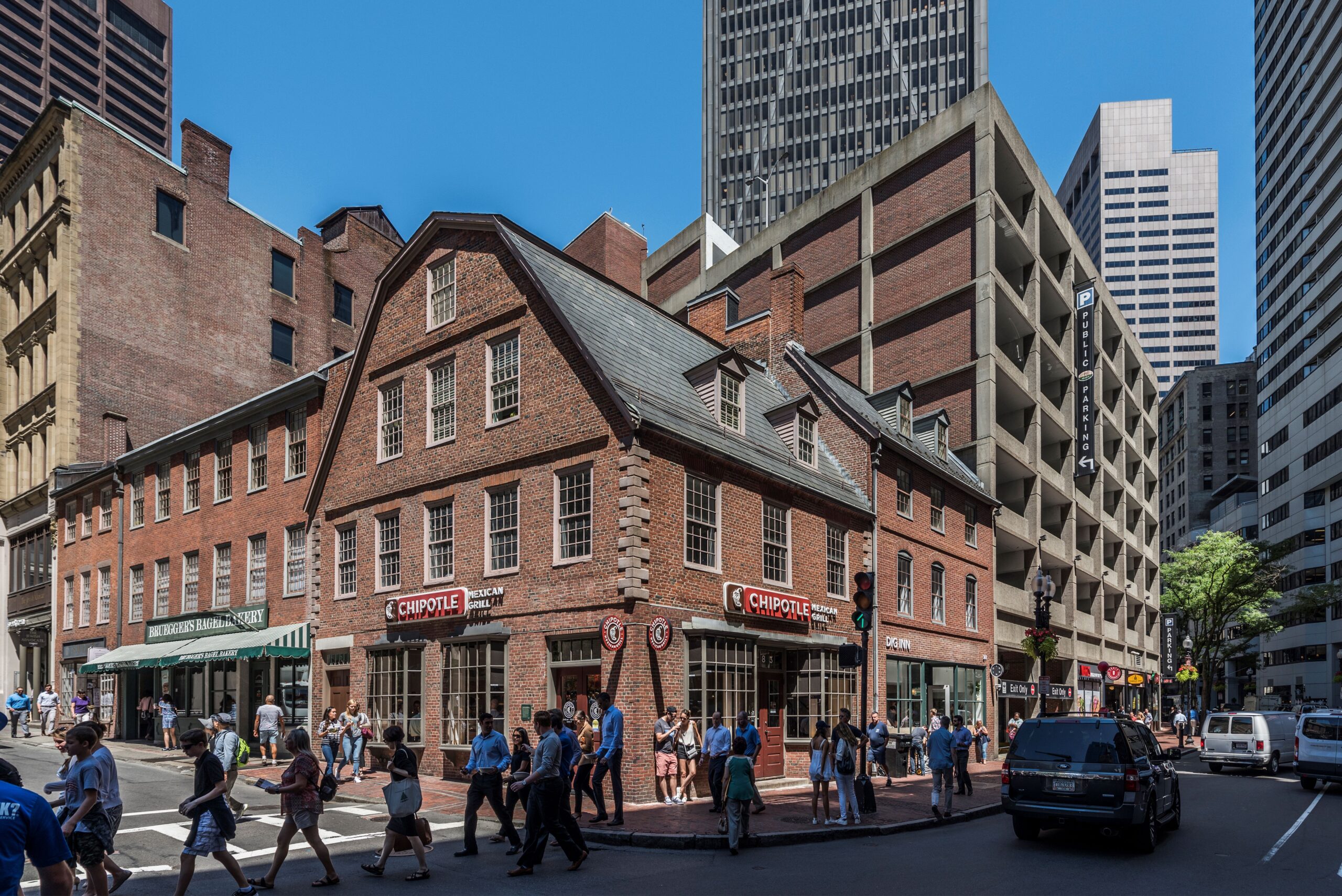
13 Nov A zero-carbon future for the Old Corner Bookstore?
The Historic Boston team is on a mission to prepare the Old Corner Bookstore complex (OCB) for its next century. That means that climate resilience and energy efficiency must be the cornerstone for planning repairs and upgrades. In addition to preparing for extreme heat and high-intensity storms, we are taking on the City of Boston’s goal to become carbon-emissions neutral by 2050 as another challenge to meet. But how to get started?
To reduce energy use and reduce and eventually eliminate greenhouse gas (GHG) emissions, we need to know how much energy we are using today, and what the emissions impact is. Even though OCB is a pretty small building—less than 18,000 square feet—it is quite complicated. It has multiple tenants that use their spaces in a variety of ways including retail, food service, office and recreational. Historic Boston has its offices there too. Now, thanks to Portfolio Manager, a powerful building energy management tool that the US Environmental Protection Agency created and supports, we have been able to compile energy data for HBI and all of its tenants at OCB. The utility companies are connected through Portfolio Manager too, which means that our energy use data will be automatically updated going forward. We can now understand whole-building energy use and GHG emissions picture—and use that information to guide plans for building improvements.
The City of Boston is requiring larger buildings to report on their energy use and their “carbon emissions intensity” (CEI, measured as tons of emissions per square foot per year). The goal is for buildings to be carbon neutral by 2050. Even though OCB is small enough that this reporting requirement doesn’t currently apply, the baselines and benchmarks from the City’s reporting program, called BERDO, are helpful to Historic Boston to use for comparison. Portfolio Manager calculates OCB’s CEI to be 12.7. BERDO would target 10.8 for our building type during the 2025-2029 time period.
This is a very helpful guidepost for us as we work with our design team to determine which upgrades—such as air sealing and new windows—reduce the building’s overall energy use, and which upgrades can shift us from gas to electric in order to reduce the building’s overall carbon footprint. It also helps us understand how HBI can reduce the energy use and carbon emissions in its own space and in the building’s other office spaces, and how it can collaborate with retail and office tenants to encourage them to adopt energy efficiency and clean energy measures in their equipment and operations.
We are excited to have achieved this goal of having complete energy data to analyze and share. Stay tuned for the next planning phase for this unique complex.
Guest blogger Kimberly Vermeer is President of Urban Habitat Initiatives. She works with owners and developers to achieve their sustainability and climate resilience goals for their properties. Learn more at www.urbanhabitatinitiatives.com.



